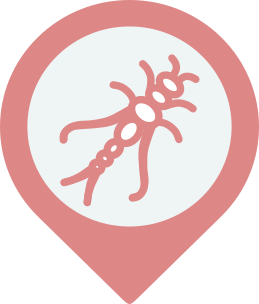location
GEMET keywords
Type of resources
Available actions
Topics
INSPIRE themes
Keywords
Contact for the resource
Provided by
Years
Formats
Representation types
Update frequencies
status
Scale
Resolution
-

The evolution of infrastructure networks such as roads and streets are of utmost importance to understand the evolution of urban systems. However, datasets describing these spatial objects are rare and sparse. The database presented here represents the road network at the french national level described in the historical map of Cassini in the 18th century. The digitalization of this historical map is based on a collaborative platform methodology that we describe in detail. These data can be used for a variety of interdisciplinary studies, covering multiple spatial resolutions and ranging from history, geography, urban economics to the science of network. (2015-01-15)
-

Dans le cadre de l'observatoire Sélune ont été disposées des stations pilotes le long du cours principal de la Sélune, réparties de l’amont à l’aval des barrages hydroélectriques. Trois stations se situent dans les anciennes retenues des barrages, les deux autres, dites de référence, sont hors zone d'influence des anciens barrages (l'une étant en aval et l'autre en amont). Dans ces stations, les biocénoses aquatiques (incluant macroinvertébrés benthiques, biofilms, macrophytes...) sont suivies. Les paramètres suivis sont la composition spécifique et le recouvrement, sur 8 stations du cours principal situées à l’amont, à l’aval et sur les zones néo-lotiques des communautés de macrophytes. La fréquence du suivi consiste en une campagne annuelle pour les stations hors retenues (S0, S1 et S5) et deux campagnes annuelles (printemps/automne) pour les stations néo-lotiques (S2, S3.4, S4.1 et S6). Le protocole mis en œuvre est le protocole d’échantillonnage des macrophytes et bryophytes suivant la norme NF T90-395 (octobre 2003) qui définit l’IBMR. Les taxa sont prélevés pour être identifiés en laboratoire. Cette couche donne La détermination des taxons s'appuie sur la version v17 de la référence TAXREF. Le jeu de données est actuellement sous embargo.
-

Les communautés microbiennes jouent un rôle majeur dans le fonctionnement des écosystèmes : elles sont à la base de la chaîne alimentaire (production primaire) et participent à la dégradation de la matière organique. Ces communautés sont, de plus, connues pour répondre rapidement à des changements environnementaux. Elles peuvent être utilisées comme indicateurs écologiques, à l'instar des macro-invertébrés. Les diatomées benthiques sont les organismes photosynthétiques majoritaires au sein de cette communauté biologique. L’abondance relative des différentes espèces permet de calculer un indice de qualité du milieu (IBD). Des fortes différences de communautés entre les zones amont et aval ont été constatés quand les barrages étant en place. Elles seront amenées à évoluer après l’effacement de ces barrages. Dans le cadre de l'observatoire Sélune ont été disposées des stations pilotes le long du cours principal de la Sélune, réparties de l’amont à l’aval des barrages hydroélectriques. Trois stations se situent dans les anciennes retenues des barrages, les deux autres, dites de référence, sont hors zone d'influence des anciens barrages (l'une étant en aval et l'autre en amont). Dans ces stations, les biocénoses aquatiques (incluant macroinvertébrés benthiques, biofilms, macrophytes...) sont suivies. Depuis septembre 2014, les stations sont idéalement échantillonnées tous les mois d’Avril à Octobre (7 relevés annuels) à l'aide de substrats artificiels (lames de verre disposées dans l'eau). En plus du relevé des diatomées (liste floristique, calcul de l'IBD), la concentration en chlorophylle-a est mesurée. Lors de chaque campagne, un protocole d'échantillonnage expérimental INRAe est mis en oeuvre. Ce protocole implique des dispositifs d'immersion (1 mois) de lames de verre, une mesure in situ de concentration en chlorophylle-a via BentoTorch puis une récolte du biofilm sur ces lames de verre. Le biofilm est conditionné dans (1) dans de l'éthanol à 99.9% pour la détermination des IBDs et des listes floristiques (prestation externalisée, s'appuyant sur la norme NF T90-354) et (2) dans de l'eau minérale pour mesure de concentration de la chlorophylle-a via spectromètre. NB : l'année 2023 n'est pas couverte en matière de mesure de concentration en chlorophylle-a via Spectrométrie suite à un problème de conservation basse température des échantillons. Ce jeu de données propose les mesures de concentration moyenne journalière de chlorophylle-a et de phéopigment en µg/cm2/jour
-

Dans le cadre de l'observatoire Sélune ont été disposées des stations pilotes le long du cours principal de la Sélune, réparties de l’amont à l’aval des barrages hydroélectriques. Trois stations se situent dans les anciennes retenues des barrages, les deux autres, dites de référence, sont hors zone d'influence des anciens barrages (l'une étant en aval et l'autre en amont). Dans ces stations, les biocénoses aquatiques (incluant macroinvertébrés benthiques, biofilms, macrophytes...) sont suivies. 2 campagnes d'échantillonnage (printemps et automne) de macroinvertébrés benthiques (mib) sont réalisées depuis septembre 2014. Lors de chaque campagne, 2 protocoles d'échantillonnage sont mis en oeuvre : - suivant la norme NF T90-333 qui permet le calcul de l'IBG-DCE et l'I2M2 ("SURBER") - via des substrats artificiels immergés pendant 1 mois ("SUBART"), afin de se focaliser sur la mesure de « l’effet des barrages ». Le protocole est décrit dans : Piscart C., Moreteau, J.C., Beisel J.N. (2006). Monitoring changes in freshwater macroinvertebrate communities along a salinity gradient using artificial substrates. Environmental Monitoring and Assessment 116: 529-542. Cette couche détaille les taxons de macroinvertébrés benthiques et leurs abondances obtenus après analyse (selon la norme NF T90-388). Ces données sont distribuées par campagne et par secteur. Les taxons présentant l’ensemble des critères morphologiques clairement visible et caractéristique permettant l’exactitude de leur détermination et un état de conservation irréprochable sont intégrés à la collection de référence de l’Observatoire Sélune. Celle-ci est consultable sur demande (cf. point de contact). La détermination des taxons s'appuie sur la version v17 de la référence TAXREF. Le jeu de données est actuellement sous embargo.
-

Les communautés microbiennes jouent un rôle majeur dans le fonctionnement des écosystèmes : elles sont à la base de la chaîne alimentaire (production primaire) et participent à la dégradation de la matière organique. Ces communautés sont de plus connues pour répondre rapidement à des changements environnementaux. Elles peuvent être utilisées comme indicateurs écologiques, à l'instar des macro-invertébrés. Les diatomées benthiques sont les organismes photosynthétiques majoritaires au sein de cette communauté biologique. L’abondance relative des différentes espèces permet de calculer un indice de qualité du milieu (IBD). Des fortes différences de communautés entre les zones amont et aval ont été constatés quand les barrages étant en place. Elles seront amenées à évoluer après l’effacement de ces barrages. Dans le cadre de l'Observatoire Sélune, les stations sont échantillonnées tous les mois d’Avril à Octobre (7 relevés annuels) à l'aide de substrats artificiels (lames de verre disposées dans l'eau). En plus du relevé des diatomées (liste floristique, calcul de l'IBD), la concentration en chlorophylle a est mesurée. Cette couche donne la valeur de l'indice IBD et EQR (normé) à une station pour une campagne.
-

Les communautés microbiennes jouent un rôle majeur dans le fonctionnement des écosystèmes : elles sont à la base de la chaîne alimentaire (production primaire) et participent à la dégradation de la matière organique. Ces communautés sont, de plus, connues pour répondre rapidement à des changements environnementaux. Elles peuvent être utilisées comme indicateurs écologiques, à l'instar des macro-invertébrés. Les diatomées benthiques sont les organismes photosynthétiques majoritaires au sein de cette communauté biologique. L’abondance relative des différentes espèces permet de calculer un indice de qualité du milieu (IBD). Des fortes différences de communautés entre les zones amont et aval ont été constatés quand les barrages étant en place. Elles seront amenées à évoluer après l’effacement de ces barrages. Dans le cadre de l'observatoire Sélune ont été disposées des stations pilotes le long du cours principal de la Sélune, réparties de l’amont à l’aval des barrages hydroélectriques. Trois stations se situent dans les anciennes retenues des barrages, les deux autres, dites de référence, sont hors zone d'influence des anciens barrages (l'une étant en aval et l'autre en amont). Dans ces stations, les biocénoses aquatiques (incluant macroinvertébrés benthiques, biofilms, macrophytes...) sont suivies. Depuis septembre 2014, les stations sont idéalement échantillonnées tous les mois d’Avril à Octobre (7 relevés annuels) à l'aide de substrats artificiels (lames de verre disposées dans l'eau). En plus du relevé des diatomées (liste floristique, calcul de l'IBD), la concentration en chlorophylle-a est mesurée. Lors de chaque campagne, un protocole d'échantillonnage expérimental INRAe est mis en oeuvre. Ce protocole implique des dispositifs d'immersion (1 mois) de lames de verre, une mesure in situ de concentration en chlorophylle-a via BentoTorch puis une récolte du biofilm sur ces lames de verre. Le biofilm est conditionné dans (1) dans de l'éthanol à 99.9% pour la détermination des IBDs et des listes floristiques (prestation externalisée, s'appuyant sur la norme NF T90-354) et (2) dans de l'eau minérale pour mesure de concentration de la chlorophylle-a via spectromètre. La détermination des taxons s'appuie sur la version v17 de la référence TAXREF. Le jeu de données est actuellement sous embargo.
-

Les macrophytes sont un ensemble de plantes aquatiques. Elles se situent à la base de la chaine alimentaire et peuvent fournir un habitat à de nombreuses autres espèces. L’abondance relative des différentes espèces permet de calculer un indice de qualité du milieu (IBMR). Dans le cadre de l'observatoire Sélune ont été disposées des stations pilotes le long du cours principal de la Sélune, réparties de l’amont à l’aval des barrages hydroélectriques. Trois stations se situent dans les anciennes retenues des barrages, les deux autres, dites de référence, sont hors zone d'influence des anciens barrages (l'une étant en aval et l'autre en amont). Dans ces stations, les biocénoses aquatiques (incluant macroinvertébrés benthiques, biofilms, macrophytes...) sont suivies. Les paramètres suivis sont la composition spécifique et le recouvrement, sur 8 stations du cours principal situées à l’amont, à l’aval et sur les zones néo-lotiques des communautés de macrophytes. La fréquence du suivi consiste en une campagne annuelle pour les stations hors retenues (S0, S1 et S5) et deux campagnes annuelles (printemps/automne) pour les stations néo-lotiques (S2, S3.4, S4.1 et S6). Le protocole mis en œuvre est le protocole d’échantillonnage des macrophytes et bryophytes suivant la norme NF T90-395 (octobre 2003) qui définit l’IBMR. Les taxa sont prélevés pour être identifiés en laboratoire. Cette couche donne la valeur de l'indice IBMR et EQR (normé) à une station pour une campagne ainsi que les informations concernant la robustesse de cet indice, les quantités de taxons utilisés pour le calcul de ces indices mais également des informations en terme de proportion de grands groupes floristiques (heterotrophes, algues, bryophytes, pteridophytes, helophytes, phanerogrames, végétation flottante et végétation immergée).
-

Superposition de la délimitation des Bassins Versants de Bretagne avec l'indice de végétation NDVI découpé sur la ville de Rennes. Les Bassins Versants de l'étude CSEB résume la localisation et la délimitation de l'ensemble des bassins versants présent en Bretagne. Cette donnée est disponible en libre service sur GéoBretagne. Le NDVI calculé sur Rennes est basé sur un image Sentinel-2 récupéré sur SentinelHub.
-
Couche vectorielle ponctuelle de localisation du réseau de capteurs de température et de stations météorologiques de Rennes et des communes périphériques (Rennes Urban Network). Capteurs de température et d'humidité: RisingHF connectés par LoRaWAN Stations météorologiques (températures, humidité, vent, précipitations...) connectées par Internet (Raspberry). Parfois pour un point: 2 données renseignées dans la table attributaire qui correspondent à une station et un capteur (les stations ont été doublées d'un capteur afin de valider la concordance entre les deux). Installés depuis le 1er avril 2021 sur l'ensemble du territoire Villes: Rennes, Cesson-Sévigné, Saint-Jacques-de-la-Lande, Saint-Grégoire, Vern-sur-Seiche, Le-Rheu, Pacé, Betton, Chantepie, La-Mézière, Thorigné-Fouillard, Vezin-Le-Coquet, Melesse, l'Hermitage, La-Chapelle-des-Fougeretz, Montgermont,Chevaigné
-
Abstract This site provides the global geographical distribution of gorse (Ulex europaeus) in introduced areas. We provide the xls files with all data in the standardized Darwin Core format, the map and the corresponding files. Coordinate points are provided in decimal degrees (latitude, longitude) and correspond to the confirmed existence of Ulex europaeus between 1950 and 2018. The dataset is a compilation of several sources, online databases (including GBIF and iNaturalist), scientific papers, personal communications, and prospecting by the authors (in the field or through online visual searches). The data were verified and duplicates were removed. More details are provided in Christina et al., 2020. The resulting dataset comprises 14,053 occurrences. The geo-located points are classified according to the administrative boundaries of the countries or islands in which they are located, except for Europe. For Europe, refer to the GBIF database. To view the interactive map, go to WMS and click on “add to map” or "visualiser" below. Résumé Distribution géographique de l'ajonc Ulex europaeus à l’échelle mondiale au format Darwin Core. Les points de coordonnées sont en degrés décimaux (latitude, longitude), ils correspondant à l’existence avérée d’un individu d'Ulex europaeus entre 1950 et 2018. Le jeu de données est une compilation de plusieurs sources, banques de données en ligne (dont GBIF, iNaturalist), articles scientifiques, communications personnelles et prospection par les auteurs (sur le terrain ou par recherche visuelle en ligne). Les données collectées ont été nettoyées, vérifiées, et les doublons éliminés. Tous les pays ou régions ayant référencé de l’ajonc sont répertoriés, sauf la zone native (Europe). Le jeu de données obtenu comprend 14053 occurrences. Les points géo-localisés sont classifiés selon les limites administratives des pays ou îles dans lesquels ils sont situés. Pour l'Europe, se reporter à la base GBIF. Afin d'afficher la carte interactive, aller sur WMS et cliquer plus bas sur 'add to map' ou 'visualiser'. Data verification and accuracy Several methods were used: visual checks on geolocated images (for data from citizen science), elimination of outliers (e.g., those located in the sea) or irrelevant data (in museums, centroids of administrative regions or large vector objects, etc.). For the data selected, maximum accuracy was sought by cross-referencing multiple sources of information (literature, observations, personal communications, geolocated images). The accuracy of the geolocations obtained is less than 100 meters for two-thirds of the points and less than 1 km for three-quarters of the points. Vérification et précision des données Plusieurs méthodes ont été utilisées : vérifications visuelles sur images géo-localisées (pour les données issues des sciences citoyennes), élimination des points aberrants (par exemple ceux localisés dans la mer), ou non-pertinents (dans des Muséums, centroïdes de régions administratives ou d’objets vectoriels de grande taille…). Pour les données retenues, la précision maximale a été recherchée en recoupant de multiples informations (littératures, observations, communications personnelle, images géolocalisées). La précision des géolocalisations obtenues est inférieure à 100 mètres dans les deux-tiers des points, inférieur au km pour les trois quarts des points. Christina M., *Limbada F., Atlan A. 2020. Climatic niche shift of an invasive shrub (Ulex europaeus). Journal of Plant Ecology. rtz041, https://doi.org/10.1093/jpe/rtz041 Programme ANR MARIS : Management and risk analysis of an invading plant species (ulex europaeus (L.): how socio-ecological niche with population dynamics modelling under a wide range of climates can help. ANR reference : ANR-14-CE03-0007
 OSURIS
OSURIS